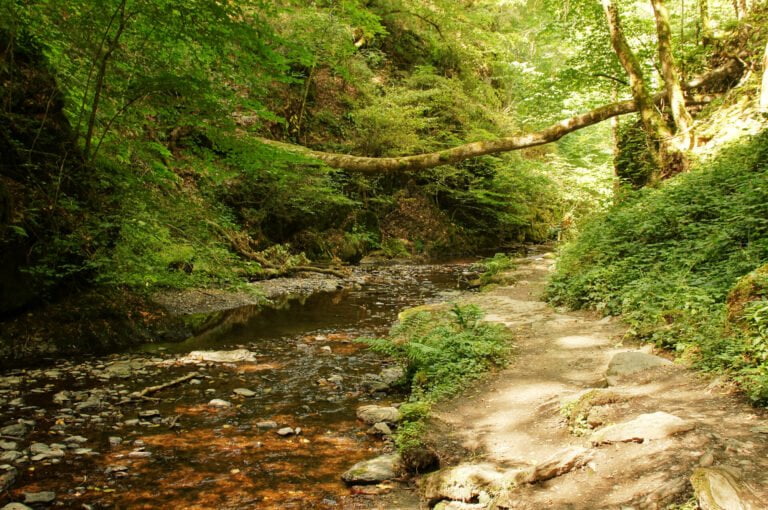Are There Any Bears in Lake Tahoe?
Black bears have inhabited the Sierra Nevada mountains, including the Lake Tahoe area, for centuries. Historical accounts and recent sightings confirm their thriving presence in the region. These omnivores adapt their diet to the changing seasons, exploiting a wide variety of food sources, from berries and nuts to fish and aquatic life. While human-bear conflicts have arisen, local authorities have implemented measures to mitigate them. Visitors can minimize risks by securing food and trash, and staying vigilant. As you venture around Lake Tahoe, stay informed about wildlife sightings and behavior patterns, and discover more about coexisting with these magnificent creatures in harmony with their natural habitat.
Lake Tahoe's Bear History
Roaming the Sierra Nevada mountains for centuries, black bears have been an integral part of Lake Tahoe's ecosystem, with evidence of their presence dating back to the indigenous Washoe people's earliest stories. These omnivores have thrived in the region, adapting to the harsh alpine environment. Historical accounts from early settlers and travelers, such as John C. Frémont, also confirm the presence of bears in the area. The bears' ability to coexist with humans has been a defining feature of Lake Tahoe's history. Despite their presence, there is a lack of documented conflicts between humans and bears, suggesting a harmonious relationship. This historical context highlights the importance of preserving the delicate balance between humans and bears in the Lake Tahoe region.
Habitat and Food Sources
Occupying a diverse range of habitats, from dense forests to mountain meadows, Lake Tahoe's black bears have evolved to exploit a wide variety of food sources. These omnivores thrive in areas with abundant vegetation, where they can forage for berries, nuts, and grasses. They also frequent areas with access to fish and other aquatic life, such as trout and crayfish. In addition to these natural food sources, human-provided food sources, like trash and pet food, can also attract bears. Unfortunately, this can lead to conflicts between humans and bears. Understanding the habitat and food sources of Lake Tahoe's black bears is essential for coexisting with these amazing creatures, which can help us take a plunge into harmonious coexistence.
Bear Sightings in Tahoe Area
As we venture into the domain of bear sightings in the Tahoe area, it's essential to understand the intricate relationship between bear habitat and behavior. Recent sightings and encounters serve as a confirmation to the region's thriving bear population, highlighting the need for awareness and education among residents and visitors alike. By examining these factors, we can better appreciate the complexities of coexisting with these majestic creatures in the Lake Tahoe region.
Bear Habitat and Behavior
The Sierra Nevada mountain range surrounding Lake Tahoe provides a diverse array of habitats that support a thriving black bear population, with sightings reported throughout the Tahoe Basin. These habitats include dense forests, meadows, and wetlands, which offer an abundance of food sources, such as berries, nuts, and fish. Black bears in the Tahoe area are omnivores, adapting their diet to the changing seasons. They are excellent climbers, swimmers, and runners, allowing them to navigate the varied terrain with ease. Their behavior is largely influenced by the availability of food, with bears often venturing into human-dominated areas in search of sustenance. Understanding their habitat and behavior is vital for coexisting with these magnificent creatures.
Recent Sightings and Encounters
While reports of bear sightings in the Tahoe area have been consistent over the years, a recent surge in encounters has sparked concern among residents and visitors alike. In 2020, the Tahoe Bear League reported a significant increase in bear sightings, with many incidents involving bears approaching homes and campsites in search of food. More recently, there have been reports of bears raiding trash cans and breaking into cars in search of food. These encounters highlight the importance of proper food storage and waste management in bear country. As the Tahoe area continues to grow in popularity, it's essential for visitors and residents to take responsibility for preventing bear encounters and ensuring a safe coexistence with these majestic creatures.
Human-Bear Conflicts Nearby
Numerous reports of human-bear conflicts have surfaced in the vicinity of Lake Tahoe, prompting concerns about the delicate balance between human habitation and wildlife conservation. These conflicts often arise from bears venturing into residential areas in search of food, attracted by unsecured trash cans, pet food, and other potential sources of nutrition. In response, local authorities have implemented measures to mitigate these conflicts, such as bear-proof trash cans and education campaigns. However, more needs to be done to address the root causes of these conflicts and promote a harmonious coexistence between humans and bears in the Lake Tahoe region. By understanding the complexities of human-bear conflicts, we can work towards a future where both species thrive and coexist peacefully.
Tahoe's Bear-Friendly Environment
Beyond the conflicts, Lake Tahoe's unique geography and climate create a sanctuary for bears, with its vast forests, abundant food sources, and secluded habitats providing an ideal environment for these majestic creatures to roam and thrive. The Sierra Nevada mountain range, which surrounds the lake, offers a vast expanse of wilderness areas, national forests, and state parks, providing ample space for bears to roam freely. The region's mild climate, with moderate temperatures and adequate rainfall, supports a diverse range of flora and fauna, ensuring a consistent supply of food for the bears. This perfect blend of natural resources and seclusion makes Lake Tahoe an attractive habitat for bears, allowing them to flourish in this picturesque setting.
Safety Precautions for Visitors
As visitors to Lake Tahoe, prioritizing safety when venturing into bear country is crucial. By taking proactive measures, individuals can minimize the risk of encounters with bears and guarantee a safe and enjoyable experience. By being mindful of their surroundings, taking necessary precautions, and adopting responsible habits, visitors can peacefully coexist with Tahoe's bear population.
Avoiding Encounters Altogether
Visitors to Lake Tahoe can substantially minimize the risk of encountering bears by taking proactive measures to secure their food, trash, and other attractants. By storing food and scented items in airtight containers and keeping a clean campsite, visitors can greatly reduce the likelihood of attracting bears. Additionally, properly disposing of trash and recyclables, and using bear-resistant trash cans, can further minimize the risk of encounters. It is also essential to keep a safe distance from any bears that may be seen, as approaching or feeding them can lead to aggressive behavior. By taking these simple precautions, visitors can enjoy the beauty of Lake Tahoe while minimizing the risk of bear encounters.
Be Aware of Surroundings
When exploring Lake Tahoe's trails and forests, remaining vigilant and aware of one's surroundings is crucial, as bears can appear unexpectedly, making it vital to stay alert and attentive at all times. Be mindful of your environment, paying attention to signs of bears, such as tracks, scat, or digging. Keep an eye out for changes in vegetation or animal behavior that may indicate a bear's presence. Make noise while hiking to avoid surprising a bear, and avoid approaching or feeding wildlife. By being aware of your surroundings, you can minimize the risk of a bear encounter and guarantee a safe and enjoyable experience in Lake Tahoe.
Precautions for Hikers
Hikers venturing into Lake Tahoe's wilderness should take necessary precautions to mitigate the risk of bear encounters by carrying bear spray, making themselves appear larger, and staying in groups whenever possible. It's essential to be prepared and knowledgeable about bear behavior to minimize the risk of an encounter gone wrong. Make noise while hiking to avoid surprising bears, and avoid hiking at dawn, dusk, or night when bears are most active. Keep a clean campsite, store food and trash properly, and refrain from feeding wildlife. By taking these precautions, visitors can minimize the risk of a bear encounter and enjoy a safe and enjoyable experience in Lake Tahoe's beautiful wilderness.
What to Do in a Bear Encounter
Stay calm and assess the situation quickly, as a bear encounter can escalate rapidly, and your composure will be key to a safe resolution. Remain still and quiet, giving the bear a clear path to leave. Avoid direct eye contact, as bears may perceive this as a challenge. Do not run, as this can trigger a bear's chase instinct. Instead, slowly and calmly back away while keeping the bear in your line of sight. If the bear approaches, use bear spray or other deterrents as a last resort. Remember, preventing encounters is always the best course of action, but knowing how to react in a bear encounter can be a lifesaver.
Coexisting With Tahoe's Wildlife
Lake Tahoe's pristine wilderness is a delicate balance of human recreation and wildlife habitat, making it essential to respect and preserve the natural harmony of this unique ecosystem. As visitors and residents, it's our responsibility to coexist with Tahoe's wildlife, ensuring a safe and thriving environment for all. This requires awareness and understanding of the local fauna, their habitats, and behavior patterns. By taking simple precautions, such as securing food and trash, respecting wildlife boundaries, and staying informed about wildlife sightings, we can minimize conflicts and promote a harmonious coexistence. By working together, we can preserve the natural beauty and biodiversity of Lake Tahoe for future generations to enjoy.



